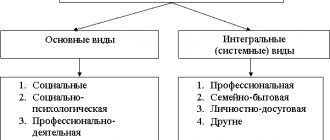Everyday people interact with each other through short-term and close communication, but none of them thinks that every fleeting dialogue and five-minute meeting is an integral part of the development of society. Social relations are a set of interactions between people, groups and the state, social classes that arise according to the type of activity, characteristics of people’s environment, their interests and goals. Another name for this kind of interaction is public relations.
Structure
The system of social relations includes a dialogue between individuals and groups, their joint activities, carried out through unevenly distributed social values. Thanks to uneven distribution, social connections are formed, for example, such as: love, friendship, power, economic relations. Depending on the personal qualities of each individual, certain interactions develop, from which a close circle of people is subsequently created.
For the normal development of social relationships, at least 2 people are needed, since the main engine and connecting link in communication is dialogue. Relationships in society can be both positive and negative (social conflicts).
Structure of social relations
The structure of social relations consists of 3 main elements:
- Subjects of communication. In this case we are talking about two or more individuals, social groups, or an individual and a social group;
- Connecting link. These include subject, interest, shared value; they act as the basis for the emergence of communication;
- clearly defined system of responsibilities or set of functions that are mandatory for all partners in their interaction with each other.
At the present stage, there is a wide range of social relations; those that exist in all other relations and represent the basis deserve special attention. We are talking about the relationship of social dependence and power.
As an example, consider a romantic relationship between two people, which implies mutual obligations and dependence of one partner on the other. This format extends to friendship, respect, management and leadership, where relationships of dependence and power are most evident.
Negative relationships
Connections that have a destructive effect on a person’s psyche, his self-esteem, personality and self-esteem, as well as the health of society include: total (hidden or obvious) dependence on a person or group of people, fanaticism, admiration for the leader.
Although psychologists note that such dependence can be not only negative, but also positive. For example, a small child is completely dependent on his parents, and they, in turn, are also dependent to one degree or another on their baby.
Legal relations
This is the type of connection that is based on legal obligations and subjective rights that are provided by the state. She is strong-willed. In order for the relationship to begin to exist, one or another document must be signed. Through certain norms, agreed upon, as a rule, on paper, the will of the state is reflected in these relations. And, by the way, they are also protected by the authorities.
But the most important thing is that it is in legal relations that the strength of legal norms and their effectiveness are manifested. You can give an example. Let's say a young man named Anton, who graduated from a university, received a summons from the military registration and enlistment office. In this case, the object of the legal relationship is military service. The subjects are Anton himself and the state. What is the content of the legal relationship? The fact is that Anton has a legal obligation to report to the military registration and enlistment office and then serve in the army. And the state, in turn, has the subjective right to call Anton to serve. These are the norms of social relations regulated by the legal field.
Signs
Social relationships are not a manifestation of the individual as such; during everyday interactions, the personal “I” is often hidden under patterned, established and accepted behavior by the person. This contributes to the creation of certain “labels” that are often used by society. For example, a person at the workplace with colleagues behaves modestly and reservedly, does not be rude and does not argue with his superiors. Those around him begin to consider him a “mum,” a weakling and a coward. At the same time, next to close people, the personality of this person is fully revealed, and he turns out to be strong, capable of standing up for himself and his family, and showing firmness when necessary.
Signs of social relations in society are considered to be established, well-coordinated connections with someone from a person’s environment. This could be negotiations at work, meetings with companions or colleagues, friends, family gatherings. Moreover, even short-term communication in the form of a standard “hello” said to an acquaintance is already a sign of social relationships.
A person without social relations - can he?
From birth, every person is surrounded by other people. He constantly interacts: parents, kindergarten, school, clubs and interest sections, then college and work. At any stage of life, you need to join certain groups, become part of a team, in order to achieve your goals or at least get an elementary education and get a job, providing yourself and your family with money for food and clothing. At the same time, we should not forget about the soul, according to Maslow’s famous pyramid, when basic needs are fulfilled, you want more, even to the point of recognition. Therefore, without social relations, a person will not be able to develop and will become an outcast. After all, even hermits from time to time enter into conversations with random travelers and journalists, joyfully sharing their experiences.
Society is a complex system where each of us is important, we are all in close interaction, becoming participants in modern processes.
Kinds
Social relationships are a complex concept that includes several types of interactions, divided by:
- Subjects. This category includes: international, mass, moral, individual, aesthetic, social relations in society between individuals and groups.
- Objects. The following types of objects are distributed: family ties (family and household), religious relations, economic and political interactions, legal.
- Modalities. This subtype is directly related to the emotional state of a person, it includes: competitive and partnership attitudes, conflict and subordination.
- Formalities. According to formalization, social connections are divided into: informal (unofficial) and formal (official). Such relationships can be found among subordinates and their superiors, managers and lower-ranking persons.
A person’s choice of behavior in one relationship or another is significantly influenced by his physical and mental health, as well as a number of factors: level of education, family, field of activity. Sometimes there is duality in relationships, since many of them are interconnected.
Types of social relations
Society is a collection of connections, the result of coordination of actions . All forms and types of relationships have social status. Each of us has his own role and set of functions that give him status. A good example is a family, a guy and a girl become husband and wife, then they have children, new responsibilities and roles arise, the children grow up and start families themselves, forming extensive family ties.
In contrast to accepted roles, there is the concept of deviant behavior. This is a deviation from accepted norms of morality and culture; deviants often suffer from psychological illnesses that do not allow them to integrate into the structure of society; they are identified and isolated from other people. Thus, you can clearly see that the system regulates itself, ridding itself of unnecessary and dangerous elements.
At the general level, the following types of connections can be distinguished:
- Class – interactions between different social groups of the population.
- National – between different ethnic groups and nations.
- Group – they consist of the interaction of different groups of the population.
- Family - family ties within a family, no matter whether it is complete or not, and how many generations it contains, two or three (four generations are very rare).
Social relationships help preserve and transmit moral and cultural values, ensure the production of new products for consumption and aesthetic pleasure. They shape the history and worldviews of entire generations.
Most common types
Social social relations in society can only develop through complete reciprocity, but it is not necessarily mutually beneficial for both parties. For example, one person wants to “tie” another to himself through coercion and imposition of unnecessary joint activities, and the second pushes away the first, not needing him, provoking a quarrel. In sociology, four types of frequently occurring relationships are defined: conflict, competition and cooperation, complete or partial dependence.
Three levels of relationships
If we analyze in detail all the intricacies of relationships between people, then, probably, we can compile a whole table of forms, criteria and levels of such interactions. But in our analysis, which presents a simple system that covers all their main components, there are only three levels of relationships, which are quite sufficient for a general analysis.
Three main levels or stages that describe the depth of a relationship:
- The initial stage of dating . Usually, at the first or second meeting (we are not considering acquaintances at work and formal ones for now), sympathy arises or, conversely, repulsion and hostility. Often there is no reason for this yet.
Author's experience
Vladimir Ekimov
I develop industrial automation systems. I create websites. I write articles for websites, books, and love to travel. Healthy lifestyle experience for more than 17 years.
Ask a Question
I had a period of actively searching for a woman to live with. After several unsuccessful meetings, an internal mechanism for initially assessing a partner has already developed. When a woman approached the meeting place (for example, in a cafe), and not a single word had yet been spoken, a specific feeling (liking, neutral attitude, or repulsion (rejection)) arose inside. Accordingly, a woman could experience something similar.
I assume, as I wrote in the first chapter, this is the interaction of biofields, higher structures of the human being, and their summaries are transmitted to the physical plane in the form of feelings and sensations. It is important to learn to decipher them correctly. I did this for some time until it became possible to translate most of these “messages” into a language and logic accessible to us.
It is clear that if sympathy arises, then it is worth continuing to meet. And at this stage, partners recognize each other, character traits, individual expressions and traits, worldviews and reactions to external manifestations.
The first emotional reactions and feelings arise. Although they can arise literally immediately during the first acquaintance (“love at first sight”). In general, these are the initial “grinding in” to each other if there is a need for a long-term relationship.
- Level of in-depth study of each other. We can say that this is the stage of mutual attraction or repulsion. Here, if the first level has been passed and the sympathy that has arisen has not disappeared, the search for new points of contact, interaction, and understanding of the interests of the other begins. People try different options for joint leisure and common interests. They may try to live together. Emotions and feelings intensify. We can figuratively say that people try each other “for taste and color.”
But if a feeling of hostility has arisen, then at this stage, people will try to avoid each other or reduce interaction to a minimum (if, for example, they work together).
- Level of joint interaction. Here emotions and feelings are already fully manifested. One might say, “overflowing,” especially if both partners, or even one, are highly emotional. And since emotional reactions require feeding, people who sympathize with each other begin to actively cooperate, find common interests, set common goals, help, and quickly get used to each other. This stage is the most emotional and active in relationships. Because to meet a person with whom you would be comfortable and would like to live and act together, of course, it cannot be said that it is completely difficult, but it is also not as easy as we would like.
Well, for people who have had hostility and cannot break up or limit communication to a minimum, everything can turn into hatred, most often manifested in the form of quarrels and conflicts. Moreover, these are very destructive, often completely empty, petty, illogical conflicts that destroy the nervous system, psyche and disrupt the physiology of the body.
In general, most interpersonal relationships progress through these three levels. Then a logical question arises: “Where to move next?” And there is a good answer to this: “But nowhere, actually. As they say – “Here we are!” That is, the further development of interpersonal relationships is problematic. Of course, we can and should look for some new forms of interaction, new common interests.
Or you can maintain these relationships at a certain level, live together, conduct joint activities (children, business, interests), help and support each other. Then, anyway, the intensity of feelings and emotions weakens and turns into an even burning. And here you need to have experience, awareness and some wisdom, maintain joint relationships, affection for each other for a long time.
You should take care of your good and harmonious relationships and not strive to rekindle the fire of passion (although this is probably possible for a short time). Attachment and sympathy for a long time (or for a lifetime) are much deeper and more expensive than fleeting and stormy passion. Attachment is a less strong, therefore more stable feeling.
Addiction
Social dependence represents the dominance of one of the parties in a relationship; its actions and instructions entail the actions of the other, weaker party. Mostly there are interdependent connections, such as: parents-children, teacher-student, state-neighboring countries. Social dependence is also observed in groups consisting of people occupying a low position and those with a higher status. For example, subordinates are completely dependent on their leaders, and in politics, the people are legally and constitutionally dependent on the ruling persons.
Rivalry
Market and socio-economic relations cannot exist without competition and rivalry, since these relationships are their basis. Rivalry is a kind of competition, a struggle using all kinds of methods and means for material wealth, capital, resources or power, a high position in society. This type of relationship is formed under the condition of strong negative feelings and emotions (hate, hostility, envy, fear) caused by a competitor in a person (group of people), and an irresistible desire to be first at all costs, to work ahead.
Material and spiritual relationships
In social science, two types of social relations are distinguished - material and spiritual.
In the process of practical activity, various material relations develop. Their occurrence does not depend on the will and desire of man. Most often they are associated with the production sector. During economic activity, people can:
- collaborate (for example, create cooperatives);
- manage (activities of a manager);
- to obey (the labor of hired workers);
- exchange goods and money (wholesale purchase of equipment for sale through retail outlets);
- appropriate the goods produced (purchase of goods in a store).
Rice.
1. Buyer and seller. These examples illustrate the relationships that arise in the process of production, distribution, exchange and consumption.
The concept of property plays a decisive role in the sphere of material interaction. Property relations are based on ownership of the means of production, objects and things.
The basis of spiritual relationships are the values and guidelines of people. They are formed in accordance with the concepts embedded in the human consciousness. Let's get acquainted with a brief definition of the varieties of this interaction.
- Moral relations are formed on the basis of moral ideas.
- Political are relationships between people and organizations based on the distribution of power.
- Legal arises in the sphere of legislation. They are based on legal rights and responsibilities.
- Religious relations affect interaction in the sphere of beliefs and beliefs in the existence of higher powers.
- Cultural characterize the interaction of people in the sphere of spiritual and cultural values.
Rice. 2. Preparation of documents.
Cooperation
Mutual assistance, partnerships - all this is cooperation. In relationships of this kind, the prerogative is to achieve a common goal. People who are united by cooperation take into account not only their own desires, but also the needs of their companions and partners. Participants usually have common interests and values that contribute to joint fruitful activities.
What relationships in managing society are most preferable?
For the normal functioning of management, the prerogative is considered to be social relations of people based on any impact on a person. In a democratic society, legal ties, respect for the individual and human freedoms, and instilling love for the homeland come first.
Power, submission, dominance, dependence, dominance, instilling fear - all these aspects can be seen in the official, competitive, political, economic and legal social relations in a society ruled by dictators. This model of social relations leads to increased tension in society, frequent conflicts and outbreaks of discontent among the middle and lower classes.
What are social relationships?
Social relations are relatively stable connections that are formed between individuals and social groups. Social relationships ensure the interaction of people, the exchange of information and experience within one social group.
The interaction of people with each other is not random. They act as representatives of certain social groups and occupy a certain place in the existing hierarchy. Based on this, people are selected to establish communication. Social relations are reproduced within the functioning of society and are its product. A change in a person’s social status leads to changes in the nature of his relationships with other people. Changes of a social nature imply a change in the entire system of relationships.
It is important to note that communication between people is carried out not on the basis of their pure “I”, but as between individuals who are at a certain stage of development of productive forces and needs. In this regard, their personal, individual attitude towards each other, the mutually conditioned communication of two people as individuals on the basis of the norms and values of a particular social group that they share or do not share, created and reproduces social relations every day. Within the framework of human interaction, not only already formed social relations appear, but also new ones are formed that correspond to new economic relations.










